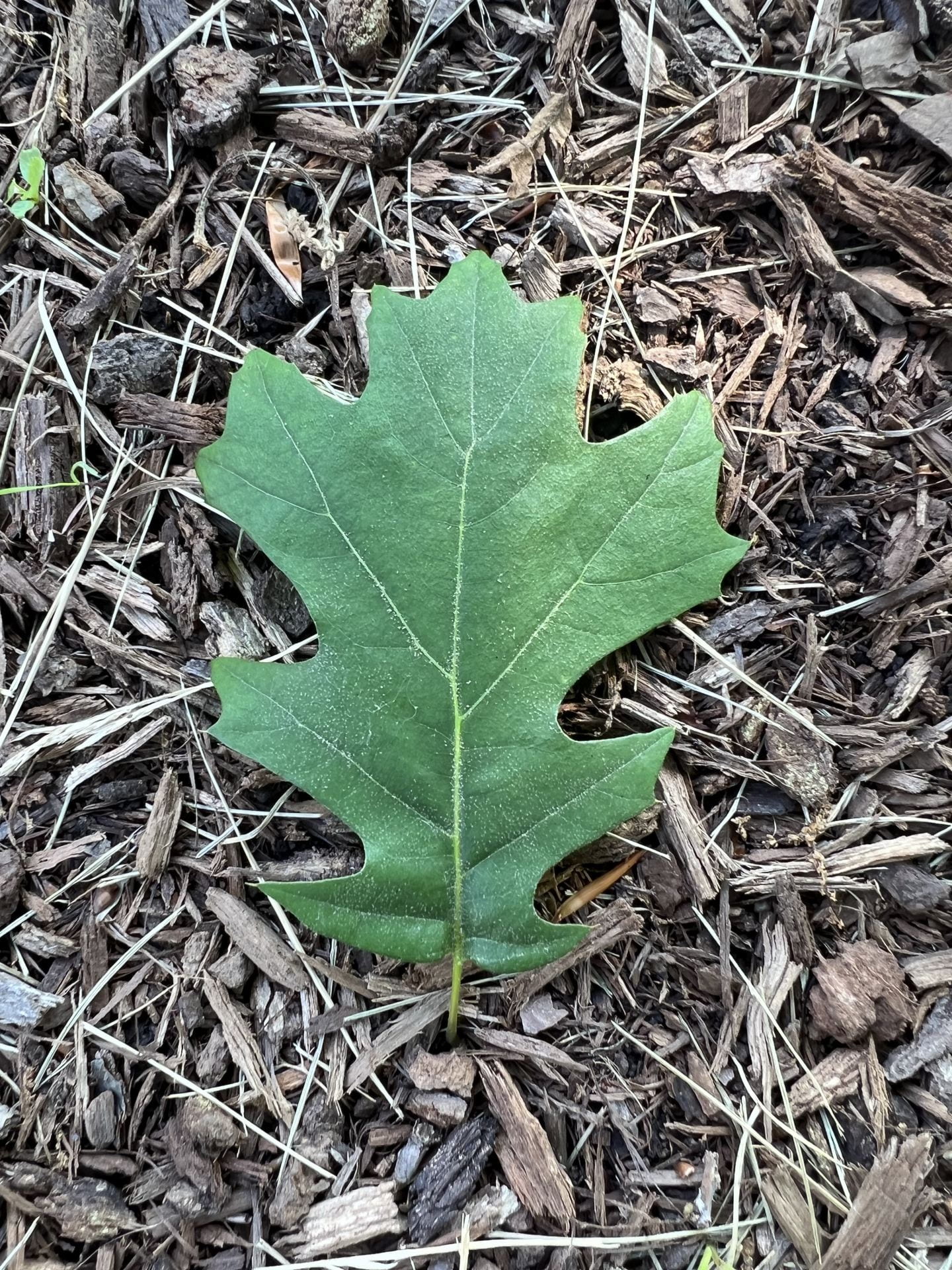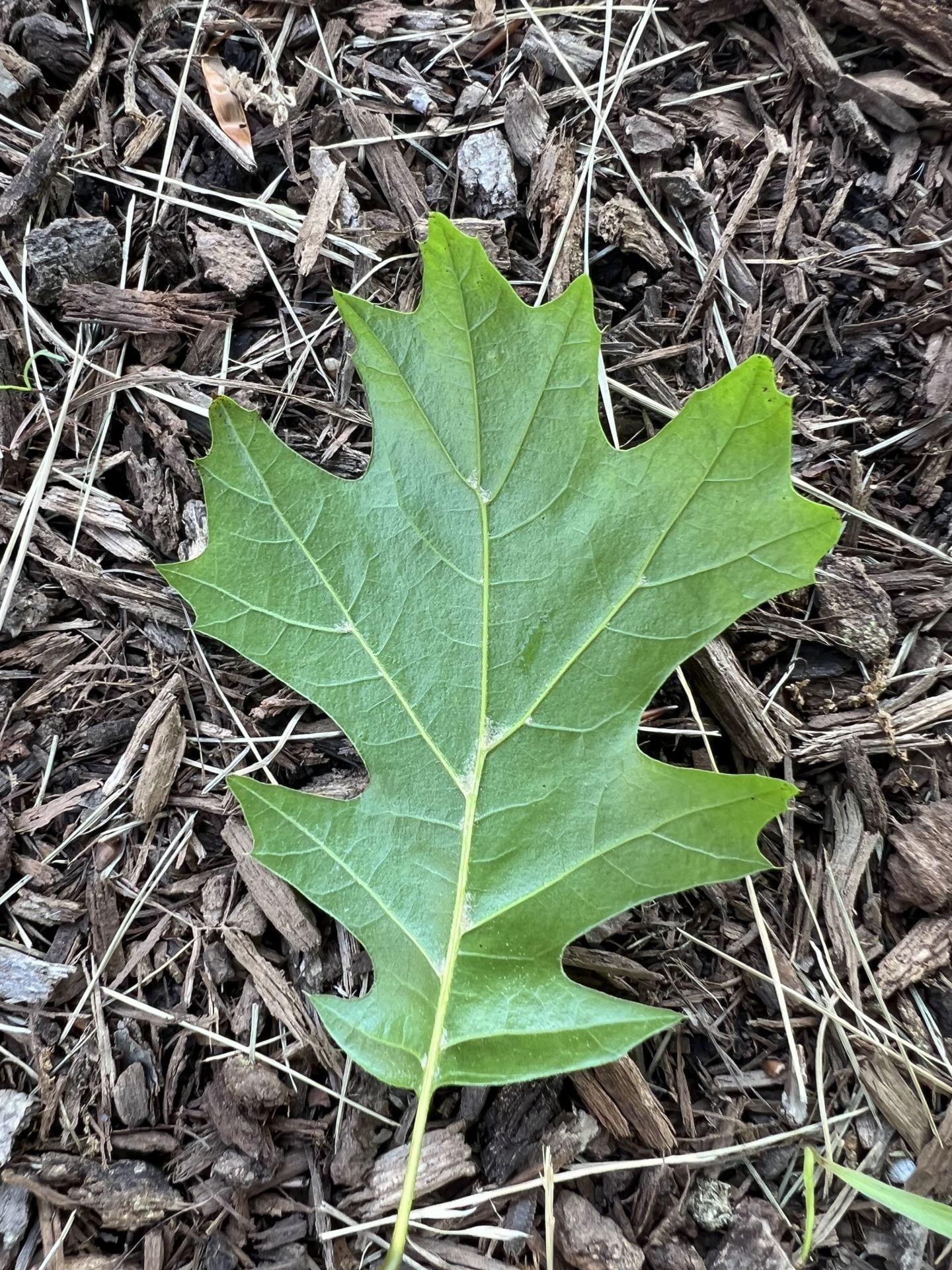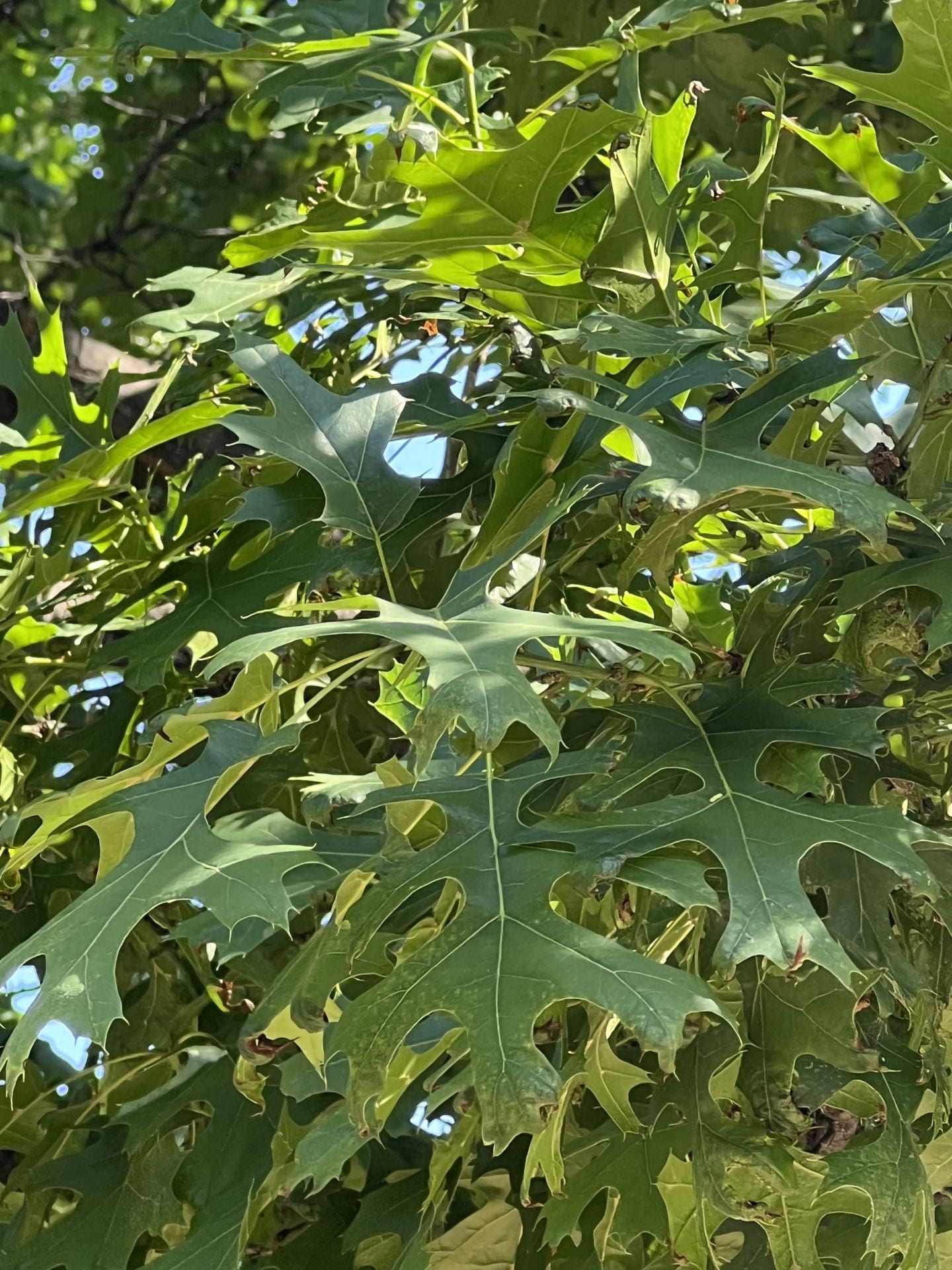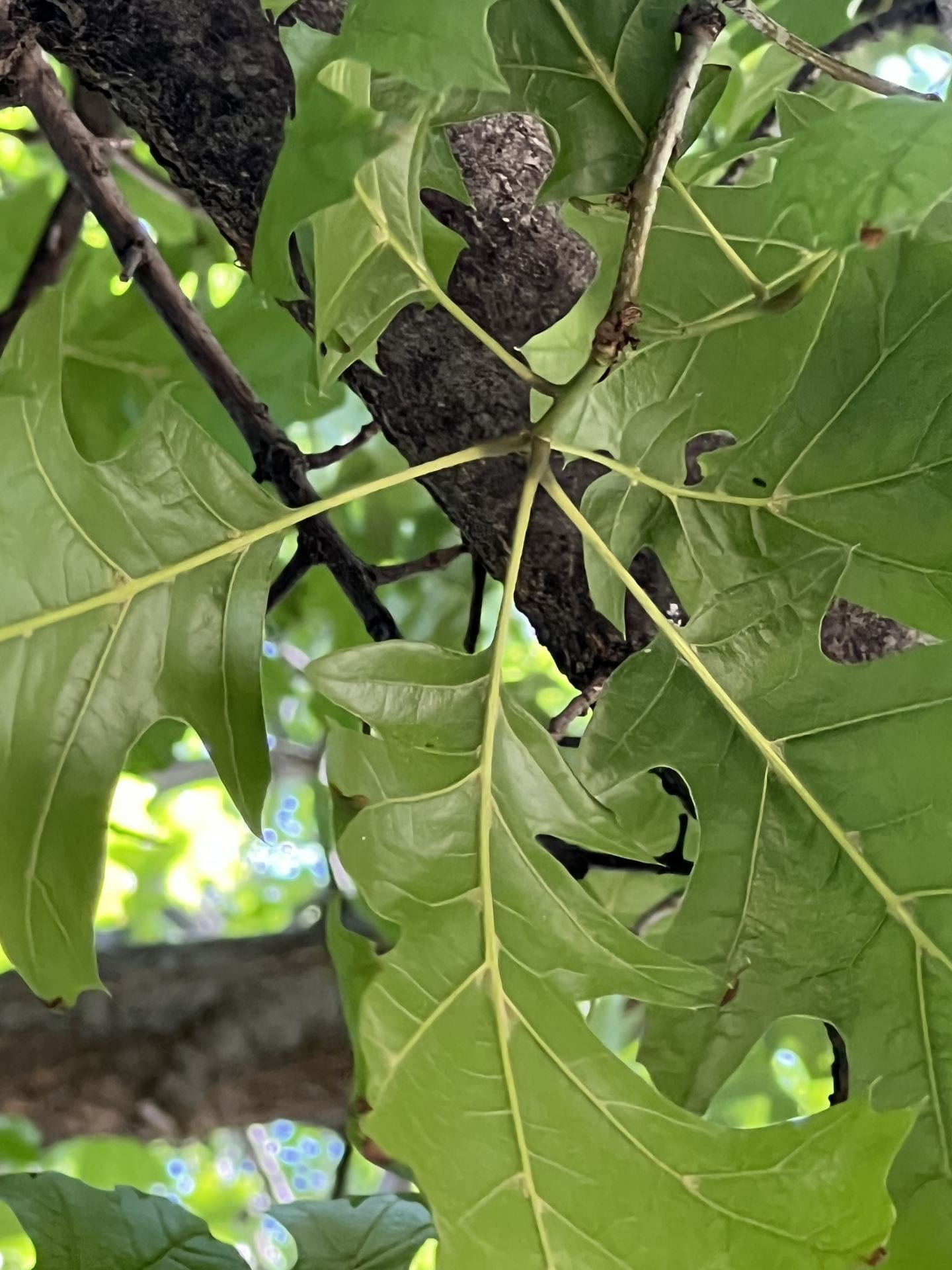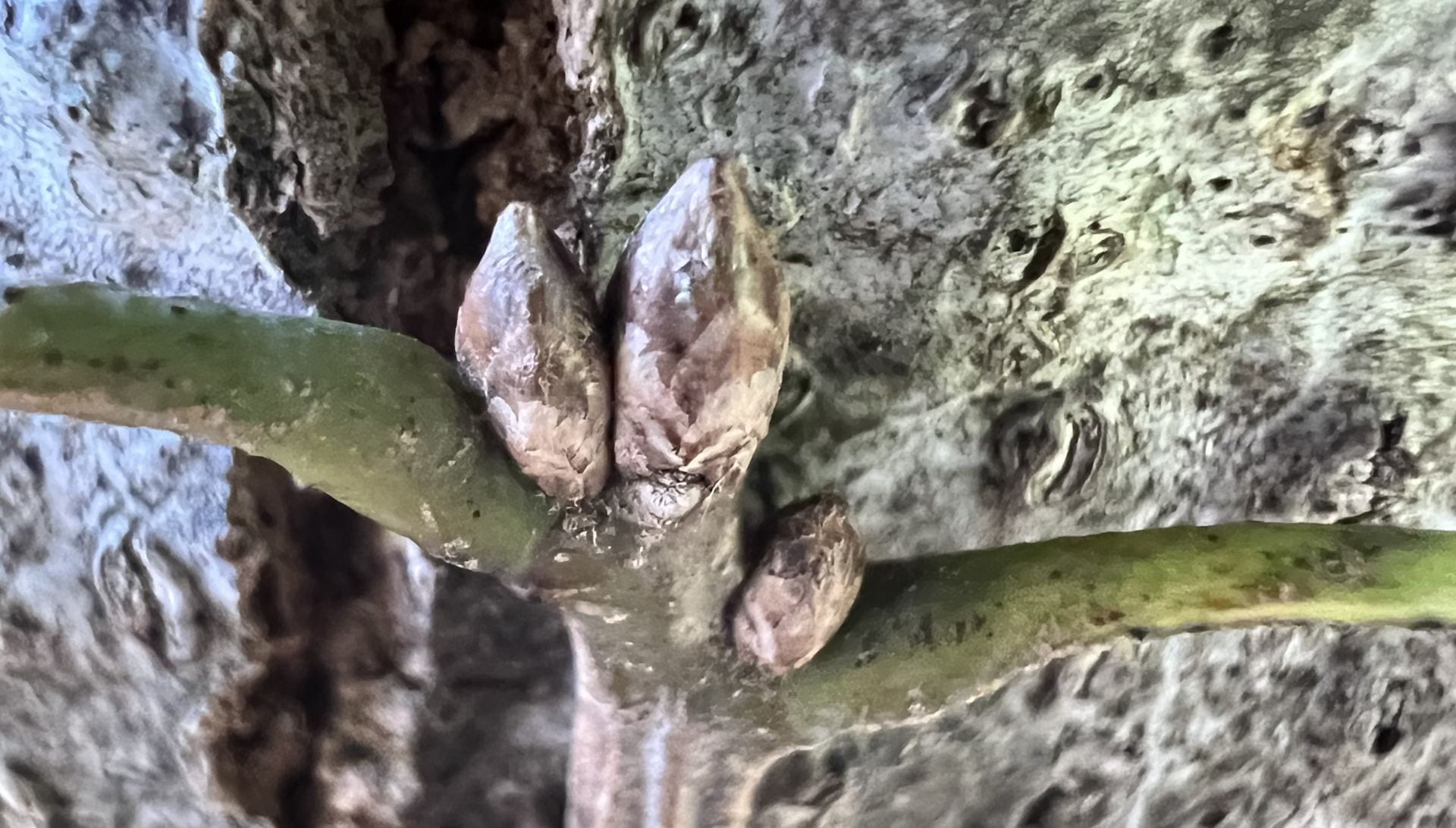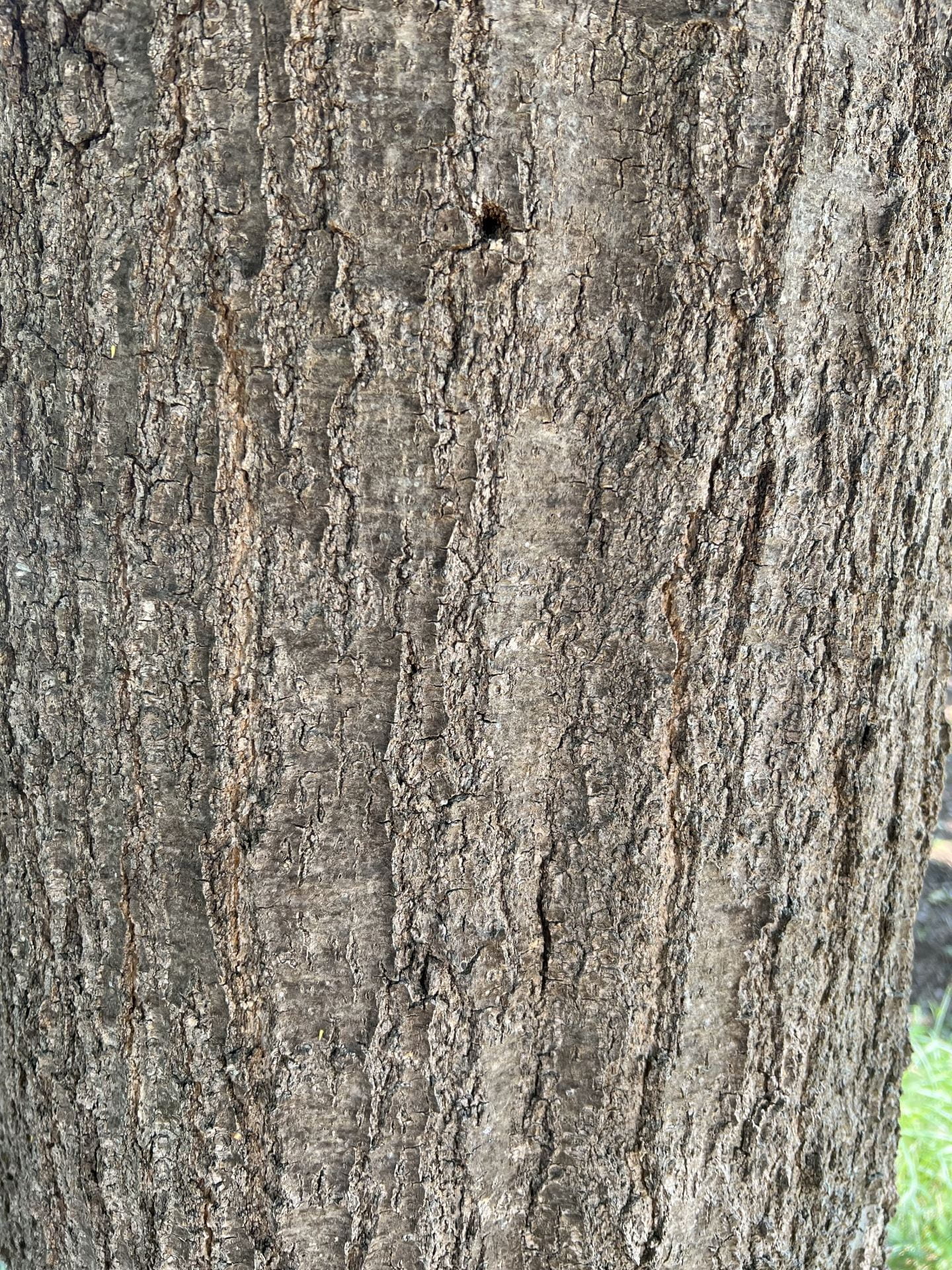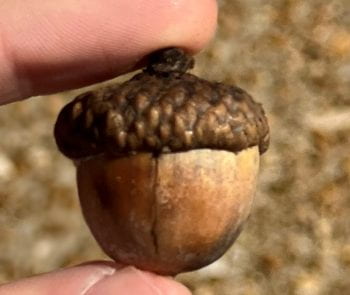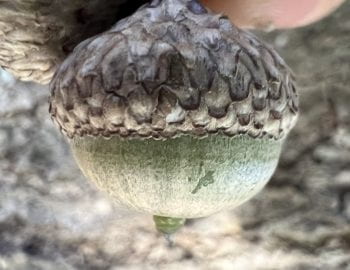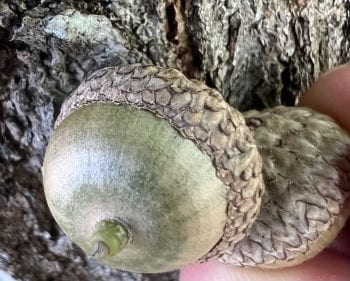Leaf Identification
The leaves of the Scarlet Oak are simple (no leaflets), alternately arranged, and 3″-7″ in length. The Scarlet Oak may have 7-9 lobes, which will be set at increasingly acute angles from the midrib. The sinuses are usually deep and rounded, though not the deepest among red oaks. The lobes have awns (bristle-tips) and the green-yellow leaf underside has orange tufts at vein axils. The leaves turn red in the fall.
Twig and Bud Identification
The twig is light brown and does not zig zag with the leaf buds. Leaf buds are reddish-brown, many-scaled, and ovoid. The terminal buds are in a small cluster.
Bark Identification
The bark is gray with striping along the trunk that grows darker and forms ridges and valleys with age.
Fruit Identification
The fruit of the Scarlet Oak is an acorn. It reaches up to 1″ in diameter and is ovoid in shape, and with faded rings at the nut tip. The acorn cup is quite deep and wide, with thickened scales.
Flower Identification
The flowers of the Scarlet Oak are monoecious with green-yellow hanging male catkins and small female flowers in spikes at the vein axils. They bloom in spring.
Oak ID Tips
- The leaves of the Scarlet Oak have the brightest, most prominent fall color of any of the red oaks.
- The Pin Oak may appear similar to the Scarlet Oak, but the Pin Oak’s leaves have much wider, deeper sinuses that are perpendicular to the midrib, not angled upwards. The Pin Oak acorns are also nearly round, whereas the Scarlet Oak acorns look more cylindrical.
- Compared to the Shumard Oak, the Scarlet Oak has a smaller leaf, a deeper acorn cup, and hairy terminal buds.
- Distinctively, the Scarlet Oak prefers dry ecosystems, making it less likely to be found with Pin Oak, Shumard Oak, Northern Red Oak and others that might be confused for it.
